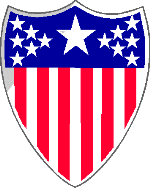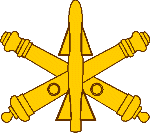ROTC
Army career fields
Info
When a cadet reaches their final year in the ROTC program, they order their branch choices by priority to determine their Army specialty. Their selections are sent before the accessioning board, which convenes in October. By January, cadets receive their branch selections and begin to prepare for their new Army careers. Branches are divided generally into three categories: Combat Arms, consisting of branches involved in direct combat; Combat Support, consisting of branches which directly aid Combat Arms; and Combat Service Support, consisting of branches providing logistical or other forms of support to the Army. To get a more detailed description of each branch check out Army Officer careers.
The Branches...
|
Adjutant General Corps |
Officers in the Adjutant General's Corps serve at all organization levels of the Army where they plan, develop, and operate the Army's personnel management support systems: a vital responsibility in both peace and war. Personnel systems include all life cycle functions such as personnel requisitioning, reassignments, evaluations, promotions, awards and decorations, reenlistment, casualty reporting, strength accounting, and replacement operations. Administrative systems management includes courier and postal services. The Army's Adjutants General shoulder a huge amount of responsibility for the smooth running of day to day Army operations. |
|
Air Defense Artillery |
Air Defense Artillery encompasses positions concerned with the employment of a family of Air Defense Artillery weapons in support of military land combat operations and against enemy aircraft and missile attacks. Depending upon the mission, Air Defense Artillery units are found defending the ground-gaining combat arms units or critical units/areas against enemy air attack. When not in combat, Air Defense Artillery units maintain an around-the-clock state of readiness to respond immediately to hostile action. |
|
Armor |
The Armor encompasses positions concerned with the employment of the Armor/Cavalry maneuver forces and combined arms organizations during mobile combat operations. Armor's mission is to close with and destroy the enemy using fire, maneuver, and shock action. The dynamism that distinguished the cavalry of yesteryear is now the hallmark of the Armor, the Combat Arm of Decision. |
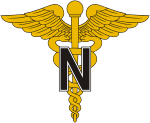 Army Nurse Corps AN Combat Service Support BOLC: Ft Sam Houston, TX |
The Army Nurse Corps is a part of the Army Medical Department (AMEDD) and is a special branch of the Army. The mission of the Army Nurse Corps is to provide quality nursing support and nursing leadership. To fulfill its mission, the Army Nurse Corps officers specialize as nurse practitioners and clinical nurse specialists and serve as staff officers at all levels throughout the AMEDD. |
 Aviation AV Combat Arms BOLC: Ft Rucker, AL |
Aviation is a combat arms branch which encompasses 80 percent of the commissioned officer operational flying positions within the Army (less those in Aviation Material Management and Medical Service Corps). Army Aviation is concerned with the accomplishment of the assigned mission to conduct prompt and sustained combat operations. Upon completion of flight training, the newly rated officer can expect challenging leadership positions with aviation units. |
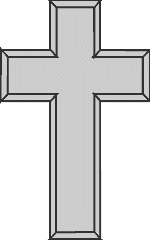 Chaplain Corps CH Combat Service Support |
The Chaplains Branch is a special branch which has the primary mission to perform or provide for comprehensive religious support for soldiers and their family members in war and peace. Chaplains assist commanders in facilitating the right to free exercise of religion for all personnel. Chaplains are commissioned officers and accredited clergy endorsed by a recognized denomination or faith group for the military ministry. |
 Chemical Corps CM Combat Support BOLC: Ft Leonard Wood, MO |
Chemical officers develop doctrine, equipment, and training to protect the Army against Nuclear, Biological, and Chemical weapons and weapons of mass destruction. They also provide the Army with smoke, obscurant, and flame capabilities on the battlefield. |
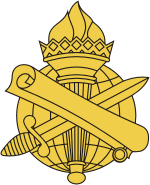 Civil Affairs CA Combat Service Support |
Like SF, cadets rarely branch directly into Civil Affairs directly from ROTC. CA officers use their language fluency and interpersonal skills to provide a liaison between the Army commander and the indigenous people in the area. The vast majority of officers in this branch are in the Army Reserves. |
 Engineers EN Combat Arms BOLC: Ft Leonard Wood, MO |
The Corps of Engineers is a Combat Arms Branch which also has combat support and combat service support roles. Engineer officers plan and execute missions relating to engineer support on the battlefield in light, heavy, airborne, and topographic missions. They coordinate and control all facilities and housing support at military installations. On a tactical level, Combat Engineers are responsible for helping the movement of friendly troops (building bridges) and hindering the movement of enemy troops (blowing up bridges). Engineering units are augmented with, among other things, Bradley Fighting Vehicles and bulldozers. Additionally, the engineer officer serves as the Army's component to the Department of Defense (DOD) team charged with mapping, charting, geodesy, and military geographic responsibilities. |
 Field Artillery FA Combat Arms BOLC: Ft Sill, OK |
The Field Artillery is the King of Battle. They are sound leaders of soldiers as well as astute managers of the most deadly resources on the modern battlefield. They blend a knowledge of tactics and a technical expertise of many weapons systems to provide all types of fire support to the ground-gaining arms. They are experts in the capabilities of cannons, rockets, missiles, naval gunfire, and close air support. |
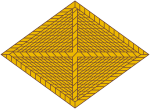 Finance FC Combat Service Support BOLC: Ft Jackson, SC |
All officers commissioned in the Finance Corps (FC) serve in a variety of financial management and leadership positions in today's Army. The ultimate mission of the FC is to support the soldiers and commanders in the field and provide the Army with expertise concerning all aspects of financial management. Finance officers are required to be both technically and tactically proficient to perform their mission in wartime as well as peacetime. They must continuously develop their professional skills and knowledge in order to stay abreast of evolving doctrine and stay current in the finance and accounting profession. |
 Infantry IN Combat Arms BOLC: Ft Moore, GA |
The Infantry encompasses positions concerned with the employment of the combined arms to close with the enemy by means of fire and maneuver in order to destroy or capture him, or repel his assault by fire, close combat, and counterattack. Infantry forces fight dismounted or mounted according to the mobility means provided. They form the nucleus of the Army's fighting strength around which the other arms and services are grouped. |
 Judge Advocate General Corps JG Combat Service Support |
The Judge Advocate General's Corps is a special branch of the Army whose officers are all lawyers. Their duties include all areas of legal practice including criminal law, administrative and civil law, contract law, and international law. |
 Medical Service Corps MS Combat Service Support BOLC: Ft Sam Houston, TX |
Medical Service officers run hospitals and clinics as patient administrators and provide patient care on the battlefield. There are three functional areas in the Army Medical Corps: Clinical Medicine, Staff and Command, and Research. |
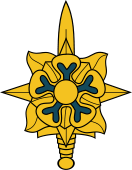 Military Intelligence MI Combat Support BOLC: Ft Huachuca, AZ |
Military Intelligence encompasses the application and integration of all Military Intelligence functions at both the tactical and strategic levels. Officers serving in this specialty plan, conduct, and supervise intelligence collection resources, analysis of the resultant raw intelligence information, and the production and dissemination of finished all-source intelligence in the form of briefings and written reports to the ultimate consumer, the commander. |
 Military Police MP Combat Support BOLC: Ft Leonard Wood, MO |
The Military Police Corps encompasses positions concerned with Military Police (MP) support to combat operations, law enforcement, security of U.S. Government resources, criminal investigation, and corrections. The combat support role provides a vital link in our national defense, and the MPs provide the tactical commander with a force that is highly organized, trained, and responsive to the battlefield commander. Military Police also serve as peacekeeping forces in a low-intensity conflict and provide security in war and peace to critical Army facilities and resources. |
 Ordnance OD Combat Service Support BOLC: Aberdeen Proving Ground, MD |
The purpose of the Ordnance Corps is to develop, produce, acquire, and support weapons systems, ammunition, missiles and ground mobility material during peace and war in order to provide combat power for the U.S. Army. The Ordnance Branch encompasses all functions related to the life cycle management of its three commodities: tank/automotive materiel, munitions materiel, and missile materiel. |
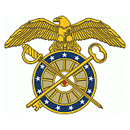 Quartermaster QM Combat Service Support BOLC: Fort Lee, VA |
The Quartermaster Corps offers a broad spectrum of opportunities. The Quartermaster Corps officer plans and directs the activities of Army units and organizations engaged in the acquisition, receipt, storage, preservation, and issue of equipment, repair parts, fortification/construction material, subsistence, petroleum products, water, and other general supplies. Quartermaster Officers must be both meticulous in their record keeping and far-sighted in their planning for future needs. |
 Signal Corps SC Combat Support BOLC: Fort Gordon, GA |
Signal Corps officers must blend together combat leadership skills and technical proficiency as they plan and manage information systems that support the command and control of the Army's forces. Signal officer assignments and career opportunities are diverse and challenging. They direct and control the installation, operations, maintenance, and reconfiguration of networks of information systems for theater/tactical, strategic, and sustaining base operations and the operation of the Army portion of the global defense communications systems. |
 Special Forces SF SPEC OPS SFQC: FT. Bragg, NC |
Special Forces is a non-accession branch (eligible after promotion to Captain) which encompasses positions concerned with the employment of highly specialized Army units and elements to accomplish specific missions throughout the levels of warfare. They conduct the missions of unconventional warfare, foreign internal defense, direct action, strategic reconnaissance, and counterterrorism. Special Forces unit members are airborne qualified, language trained and area oriented. Since potential missions are worldwide, soldiers train in forest, desert, mountain, arctic, jungle, and urban environments. |
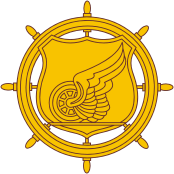 Transportation Corps TC Combat Service Support BOLC: Ft Eustis, VA |
"Nothing Happens Until Something Moves." No matter how deadly a unit's firepower, it has no effect on the enemy unless that unit can get to the battlefield. The monumental task of moving the Army from one place to another falls upon the Transportation Corps, encompassing those positions related to the multi-modal movement of personnel and cargo over land, sea, and air, anywhere in the world. |
Additional Information can be found using: DA PAM 600-3, Commissioned Officer Development and Career Management
Career Progression...
An Army officer's career is generally a series of 2 and 3 year assignments, each one preparing you for the next. Personal abilities and preferences affect the choices a person makes, so there is no one career blueprint. There is, however, a general progression most officers' careers follow.
Getting Promoted
One of the most attractive aspects of being an Army officer is the structured promotion system. The promotion system is designed to help both the Army and the Officer. The system design enables the best officers to reach positions of most importance and highest responsibility. From an individual officer's point of view, the promotion system assures a qualified person advancement after a certain time. In other words, your career can never get endlessly mired at middle management. Your performance is reviewed on a regular basis during rating periods. You will be told you are being rated, and told what is expected of you during this period. We think this process is more than fair, and that it gives every officer a real chance to be at his/her best.
The Lieutenant Phase
Once a cadet graduates, he/she is commissioned as a Second Lieutenant. The first thing a young officer does is develop in his/her primary branch by attending the Basic Officer Leader Course (BOLC). After that, some officers opt for Airborne or Ranger training (or both). But most go right to their first duty assignment. Progressing from Second to First Lieutenant, the young officer applies his/her training and develops his/her leadership abilities. In fact, learning how to lead troops is the key objective of this phase. Promotion to First Lieutenant takes about eighteen months.
The Captain Phase
A lot happens while you're a captain. The most important thing is to get experience as a Company Commander. A Company Commander is normally in charge of over 100 soldiers. Command experience, obviously, is a valuable resource throughout a career. During this phase, you attend the Officer Advanced Course. Later in this phase, you will attend the Combined Arms and Services Staff School (CAS3), which provides you with the necessary training to perform as a field grade staff officer. Additional training during the captain phase is your opportunity to become more valuable to the Army, since this is when you choose and begin to become qualified in a functional area . Promotion to Captain takes about four years.
The Major Phase
Being promoted to Major signals a big step in your career. You've become a key staff officer in charge of such areas as Personnel, Intelligence, Operations, or Logistics. You'll be given new assignments which permit you to use previously developed skills, as well as expand your overall professional development. The objective here is to develop further in your branch, and continue development in your functional area. Some officers area selected for Command and General Staff College or given the opportunity to attend civilian schools. Promotion to Major takes about 11 years.
The Lieutenant Colonel Phase
Your assignment might be as a Battalion Commander in charge of hundreds of soldiers or a general staff officer in a division or corps. Outstanding performance will merit more and more challenging positions. Some officers are selected for the Army War College, where they become "experts" at their profession. Promotion to Lieutenant Colonel takes about 17 years.
The Colonel Phase
At this phase, the Army takes maximum advantage of your talents. This means you'll be assigned as a Brigade Commander in charge of thousands of soldiers or director of a large staff. Your technical skills and accumulated executive talents will be put to the test. This is the senior level of responsibility. You're a top executive. Promotion to Colonel takes about 22 years.
General Officer
Officers who demonstrate extraordinary leadership and executive abilities are selected to become general officers; the CEO's of the Army. They do nothing less than run the Army. From division commanders to post commanders to high level staff positions, general officers are responsible for maintaining an efficient and effective Army. Promotion to General takes about 25 years.



